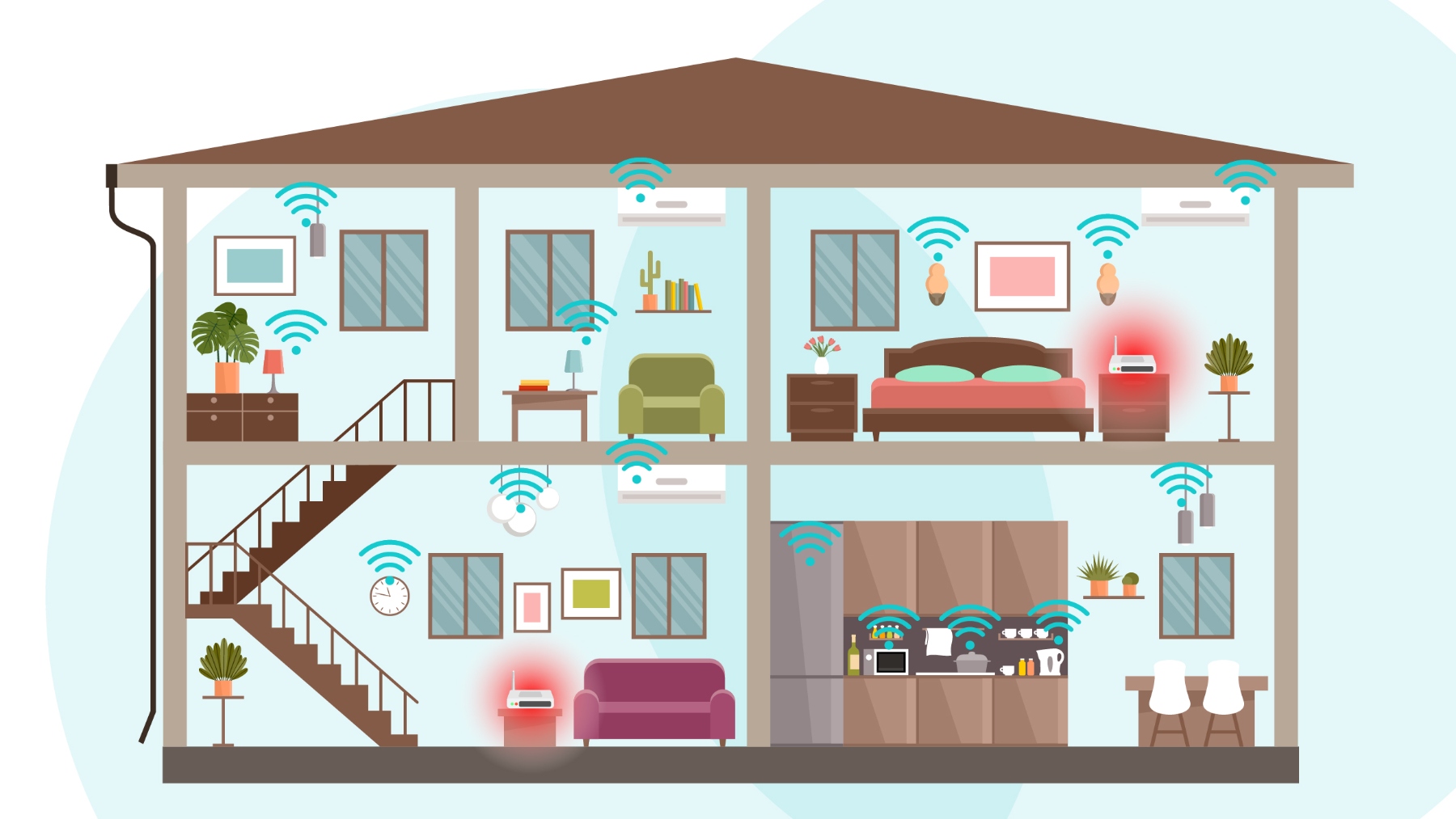Your light bulbs are now automatic. They need Wi-Fi. Your security cameras, the ones you use to see if your cat is still at home or has run away, are connected to the Internet. They also need Wi-Fi. Even the air fryers that are sold these days have an Internet connection. And of course, no router is powerful enough to cover every corner of an apartment, let alone a multi-story house.
A foolproof solution is to use the classic Ethernet cable. It reaches wherever you want it to and rarely fails. But of course, filling your house with cables is cumbersome. What’s more, most of us live in rented accommodation, which complicates matters. Fortunately, there is a way to enjoy the benefits of Ethernet cables without running meters and meters of cable along all your walls.
The alternative to repeaters is called Wi-Fi Mesh
The first time I had Wi-Fi coverage problems at home, I went to a department store and bought a PLC. It took me hours to install it because the instructions weren’t particularly clear. Did it solve my problem? Not at all. I managed to increase coverage, but the signal quality was terrible.
Later, I tried a repeater that went back to Amazon with Mr. Bezos. That TP-Link gadget wasn’t a bad product. I think I was just too naive to believe that the signal would get through the wall between my hallway and the living room. It didn’t solve my problem either.
However, the definitive solution came the day I installed a Wi-Fi Mesh system. A friend who works for a computer company recommended it to me one night at dinner. He said he had installed a dozen of them in hotels around the city. He hadn’t recommended it to me before because they were quite expensive. However, they are quite affordable nowadays. Hence the recommendation.
Mesh networks are like a fleet of small routers that are placed throughout your home. These “mini routers” are connected to each other and work as a team. Each one is a node in a network that works like a repeater, but a smart one. The result is a single, stable network that directly repeats the signal from the router cable. Your cell phone and other devices will continue to see a single network with the same name regardless of which node they connect to.
Modern mesh networks are very easy to install. Just plug them in, install the app on your phone, and follow a few simple steps. There are many brands to choose from, such as Asus, TP-Link, Netgear, Amazon Eero, and Google Nest, among many others. Many of these devices have an RJ-45 output. Therefore, if you need to connect a computer with an Ethernet cable, you can do so directly to one of these repeaters.
What should I look for before buying a Wi-Fi Mesh system?
Manufacturers tend to be very optimistic about their range figures. So, buy as many nodes as possible. Most brands offer 2 or 3 node products starting at $60 per pack. That’s why I mentioned earlier that you won’t be making a big investment.
Ideally, you should purchase models that work on dual bands (2.4 and 5 GHz). The first is the one that home automation devices will use. The second offers more speed, so it will be used by mobile phones and computers to connect to the Internet.
Before purchasing a specific model, make sure it is plug & play. Almost all of them are. If they have Ethernet ports that you are going to use, buy ones that support Gigabit Ethernet or 10 Gigabit Ethernet to get the most out of your connection.
Finally, there are a number of additions that are always welcome. For example, Wi-Fi 6E-enabled devices are ideal if you live in an area with a lot of Wi-Fi network congestion causing interference.
Our recommendation is to build your network gradually. Start with a basic 3-unit kit and place them strategically throughout your home. Measure the coverage, run a speed test, load 4K videos on your mobile… Is it slow? Then buy a second pack and expand the network. Continue doing this until you have a consistent network throughout your home. In the vast majority of cases, 6 nodes will be more than enough.
